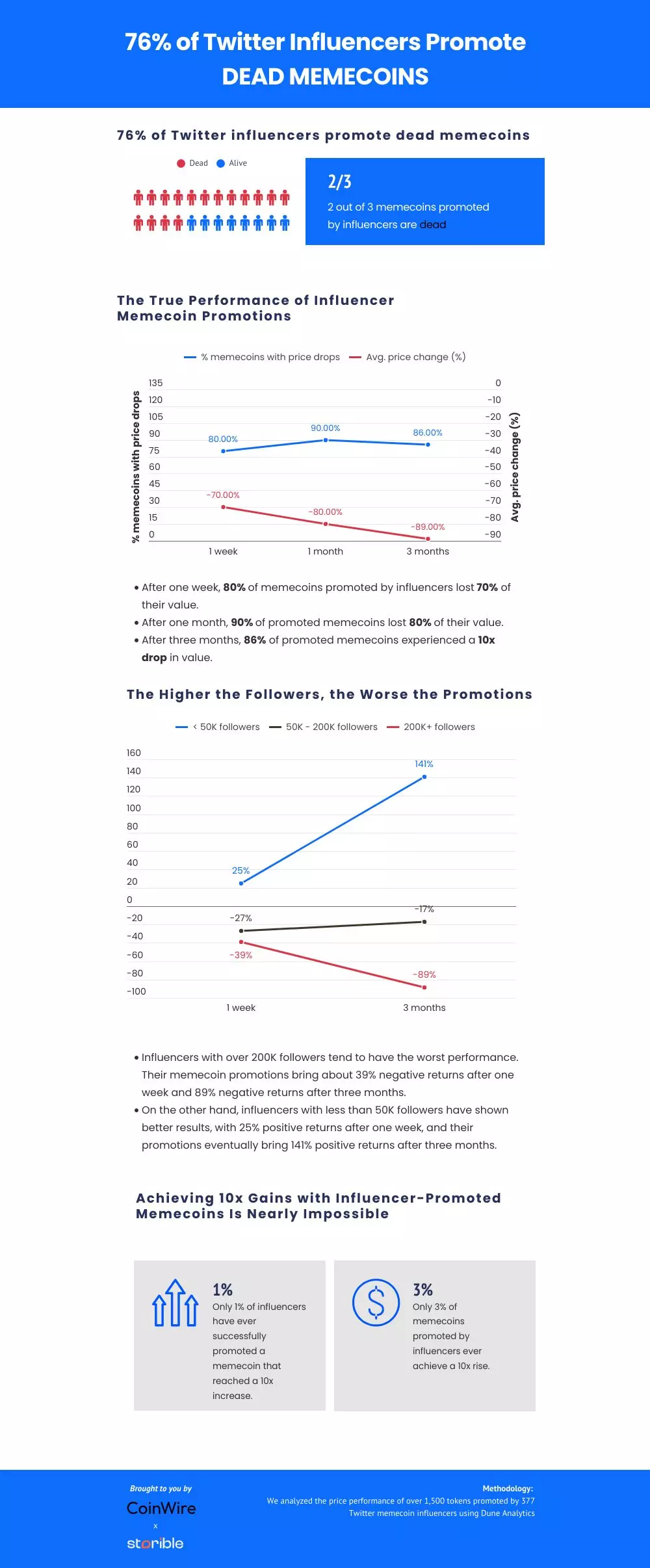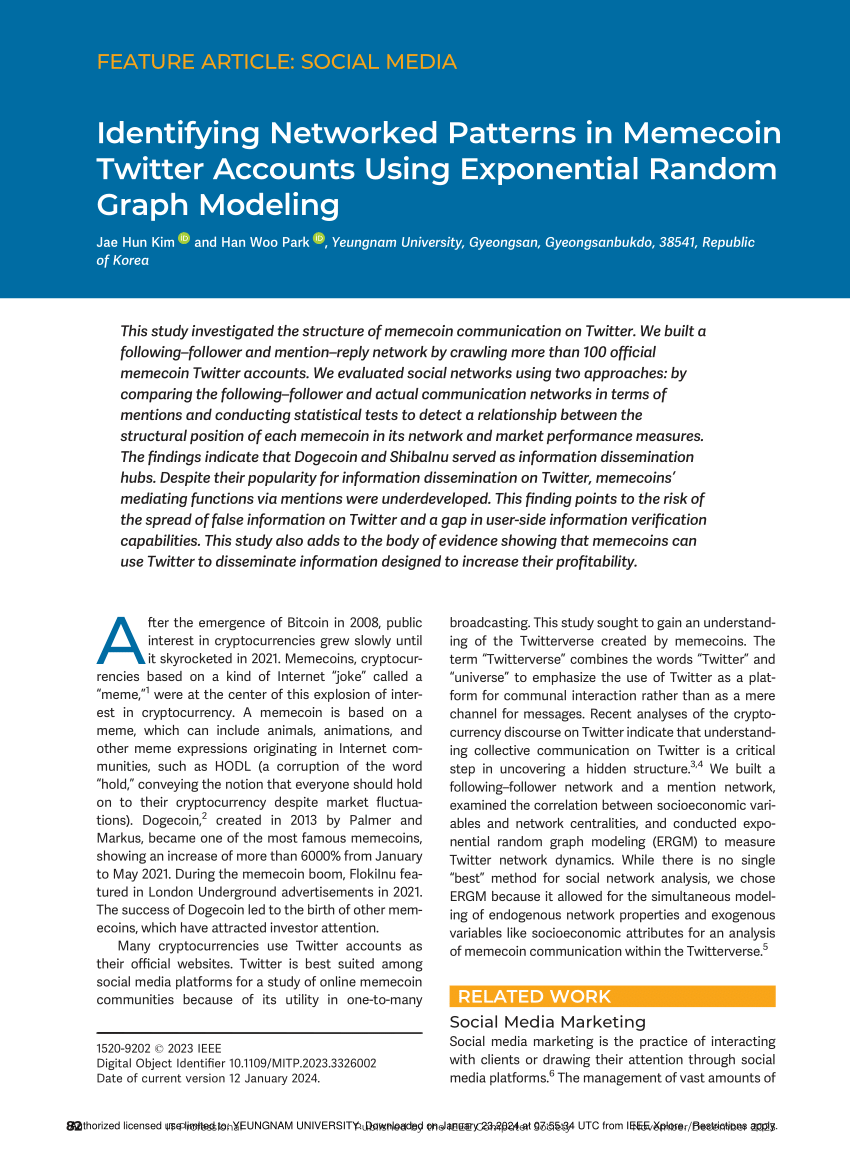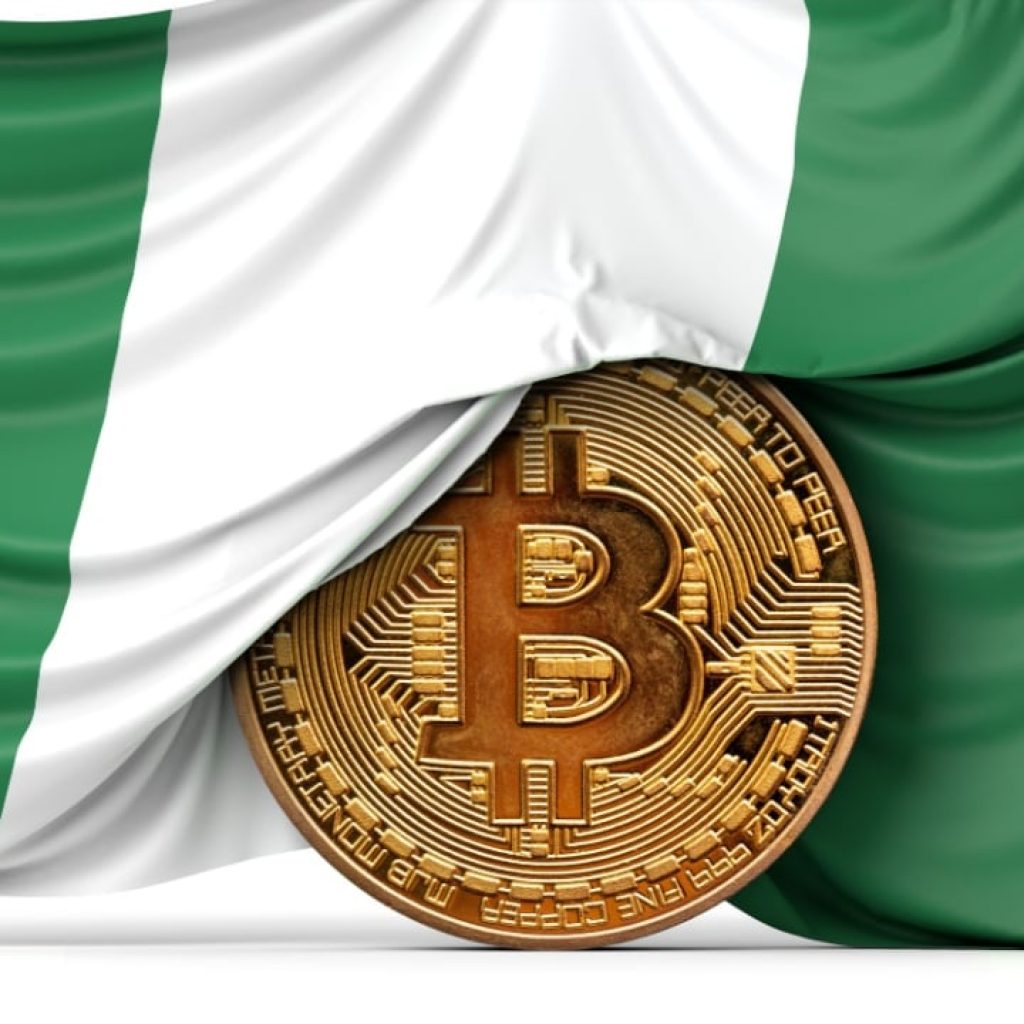The hype around memecoins has led many Twitter influencers to promote these tokens as quick investment opportunities. However, our research reveals a sobering truth: most of these memecoins are, in fact, dead, and the majority of investors end up with significant losses. To understand what is really happening in the memecoin world, we analyzed the performance of over 1,500 tokens promoted by 377 Twitter memecoin influencers. Let’s dive into the data behind these promotions.
Key Findings
- 76% of Twitter influencers promote dead memecoins.
- 2 out of 3 memecoins promoted by influencers are dead.
- 86% of influencer-promoted memecoins lost 90% of their value in 3 months.
- Only 1% of influencers promoted memecoins that gained 10x.
Methodology
We manually identified 377 Twitter influencers with at least 10,000 followers who frequently promote memecoins. We then compiled a list of 1567 memecoins that have received promotion over the past three months.
Following that, we used Dune Analytics to collect data on their pricing when initially marketed, current price, and prices after promotion: one week, one month, and three months.
A memecoin is considered dead if its current token value has decreased by at least 90% since its initial promotion.
Most Twitter Influencers Are Promoting Dead Memecoins
76% of Twitter influencers have promoted meme coins that are now dead. In fact, two out of three memecoins they promote are worthless. This means that a large proportion of influencer-driven promotions are essentially setting up investors for failure. These promotions often mislead new investors, who jump into these projects without understanding the associated risks.
The True Performance of Influencer Memecoin Promotions
The reality behind memecoin performance is far from the rosy picture painted by influencers. The data shows that these promotions rarely live up to their promises:
After one week, 80% of memecoins promoted by influencers lost 70% of their value.
After one month, 90% of these tokens decreased by 80%.
After three months, 86% of promoted memecoins experienced a 10x drop in value.
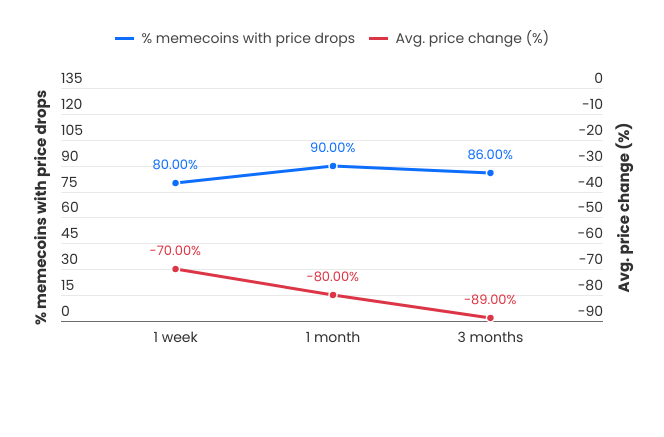
This pattern highlights the instability and volatility of influencer-backed memecoins. The data indicates that most investors end up with significant losses, often within just weeks of their investment.
Achieving 10x Gains with Influencer-Promoted Memecoins Is Nearly Impossible
One of the biggest draws of memecoins is the potential for massive gains. However, this potential is almost never realized:
- Only 1% of influencers have ever successfully promoted a memecoin that reached a 10x increase.
- Only 3% of memecoins promoted by influencers ever achieve a 10x rise.
This highlights how exceedingly rare it is for influencer-backed memecoins to yield significant returns, contrary to the hype they often generate.
The Higher the Followers, the Worse the Promotions
Interestingly, the larger the influencer’s following, the lower the performance of the memecoins they promote.
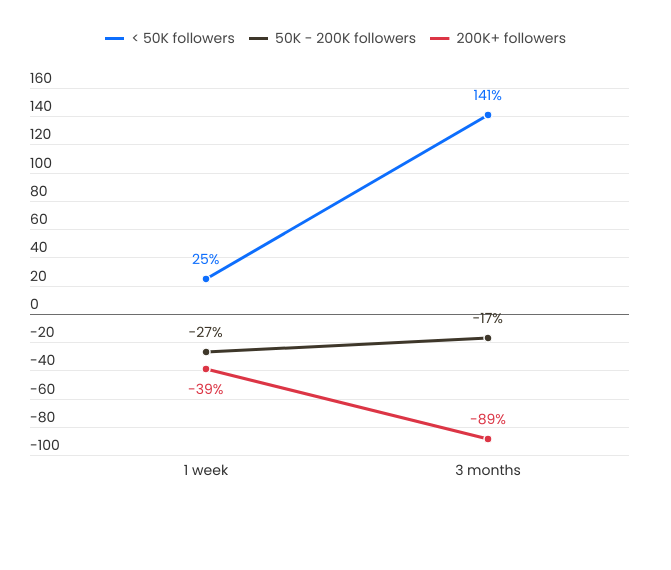
- Influencers with over 200K followers tend to have the worst performance. Their memecoin promotions bring about 39% negative returns after one week and 89% negative returns after three months.
- On the other hand, influencers with less than 50K followers have shown better results, with 25% positive returns after one week, and their promotions eventually bring 141% positive returns after three months.
This data suggests that smaller influencers may have slightly more genuine promotion practices, whereas larger influencers may prioritize financial incentives over the quality of the projects they endorse.
What Memecoin Promotions Bring to Influencers
To determine the potential earnings from an influencer’s promotional tweet, we utilize the Twitter earnings calculation feature from TweetHunter.
While investors often face losses, influencers benefit financially from promoting memecoins. On average, an influencer earns $399 per promotional tweet, with each tweet receiving nearly 15,000 views. These figures highlight the incentive structure that drives influencers to promote even the most questionable tokens. For them, the financial rewards are clear, even if the consequences for their audience are not.
Conclusion
The data reveals a troubling truth: influencer-led memecoin promotions are largely detrimental to the average investor. With 76% of influencers promoting dead tokens and only a slim chance of achieving the coveted 10x gains, it becomes evident that these endorsements serve the interests of influencers more than those of their followers. Investors need to be cautious, questioning the true value behind these promotions and avoiding decisions driven by social media hype alone.
Note that we are unable to crawl deleted promotional tweets. Meanwhile, numerous influencers have removed promotional tweets that did not provide positive results for their followers. As a result, the actual situation is expected to be far worse.
